Year of the Novel announced in Donostia
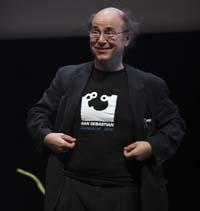
What was said during the celebration of the DIPC in Donostia came true a week later. In fact, Russians Andre Geim and Konstantin Novoselov will receive the 2010 Nobel Prize in Physics for "revolutionary experiments with two-dimensional graphene material", according to the Nobel Foundation.
Wilcz himself received in 2004 the Nobel Prize in Physics for his discovery of asymptotic freedom in the theory of strong interaction. This discovery was fundamental for the development of quantum chromodynamics. Wilcz has also made important contributions in other fields of physics, such as condensed matter physics, astrophysics or particle physics.
Geim and Novoselov will now be awarded for their research with graphene. According to Wilczek, graphene contains "really remarkable physical properties and extremely interesting applications", with Geim and Novoselov being the first to obtain this material.
In order to isolate graphene, it was based on graphite, material common in pencils, and a very common instrument, zeal was used. In this way, an unusual material was obtained, graphene, a single carbon atom sheet. It is almost totally transparent, but extremely hard, conducts electricity as well as metals and better than them heat.
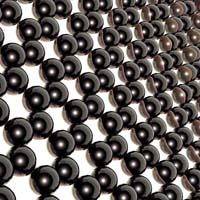
For these characteristics, it has very interesting applications. The Nobel Foundation announced in its press release this year's Physics Prize, for example, that they announce that the graffiti transistors will be much faster than those of silicon today, which will make computers more efficient.
Technology, frogs and humor
Wilcze also made another announcement. He pointed out that many times there is a lot of time since the research is carried out until the Novel is received, so the impulse that can receive the awarded research area is not perceived. And he added: "But it's still working with graphene, so perhaps, if it's given to this novel, it contributes to technological development." Apparently, Wilzcek will also draw near in it.
However, he did not play everything in a letter. In addition to graphene, he mentioned two other discoveries he considered worthy of the Novel, both of cosmological type: the acceleration of the expansion of the universe and the existence of dark matter. In his case, he considered that the influence of obtaining the Nobel prize would not be so evident.
In any case, he acknowledged that the Nobel Prize gives fame to the subject, "it gives prestige and name; it has psychological influence both in this field and in the environment". Although it does not bring him anything else, he said that collecting the Novel is "something big."
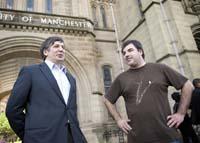
It is also great for Geim and Novoselov. Geim, however, already knew what it was to receive a Nobel Prize or something similar, since ten years ago they gave him the Ig Nobel Prize in Physics. The Ig Nobel are organized by the magazine Annals of Improbable Research and are given to research that "cannot be repeated or not convenient". The prize was awarded to Geim, along with physicist Sir Michael Berry, for lebbing live frogs using the magnetic field. Thus, Geim is the first winner of the Nobel Prize and Ig Nobel Prize.
In addition to Geim, Novoselov likes the fun and fun side of physics, as the Nobel Foundation has pointed out in its press release: "Joy is one of its characteristics; one always learns something in the process and, who knows, may ever fully succeed. As now, with graphene they have written their name in the history of science."
Other bets Other bets
Although Frank Wilcz has been the best diviner, he has not been the only one who has dared to answer the question posed by Elhuyar. Among others, the physicist Juan Ignacio Cirac also opined. In fact, in the years 1970 to 1980 the first experiments in quantum physics were carried out, which were responsible for receiving the Nobel Prize. And he also made a precision: "now or within a few years". Therefore, it still has possibilities of inventing itself.
Cirac is director of the Max Planck Institute of Quantum Optics and, although not Novel, has been awarded numerous awards, including the Félix Kuschenitz of the Austrian Academy of Sciences, the Quantum Electronics of the European Science Foundation, the Prince of Asturias for Scientific and Technical Research and the Franklin medal.
Aaron Ciechanover has a Nobel Prize in Chemistry. Wilcz received the same year of his Physics grant, in 2004, for finding protein degradation through ubiquitine. Wilcz and Ciechanover joined the days of San Sebastian again and as he answered the question. Not immediately.
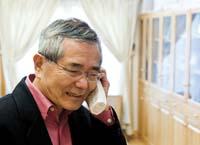
Ciechanover, close by
At first it seemed that he was not going to participate in the game. According to Ciechanover, the prizes are awarded according to what Alfred Nobel promised in the will, so one cannot choose the field that will be awarded.
And it is true that it is not easy to participate in the decision. The Nobel Committee selects experts from each category of the Nobel Foundation, about three thousand per category. Among these experts are the Nobel Prize winners, the best professors of the most prestigious universities and the members of the scientific committees, and outside of them no one can propose names. In addition, the name of the candidates and all the information about it is kept secret for 50 years.
That is why Ciechanover said he was not trying to announce. Then, however, he entered the game and suggested that, although no specific aspect had been mentioned, in medicine there were many fields deserving prize: "but every year they can only reward one, and there are many great scientists."
To some extent, the Nobel Foundation seems to have the same opinion. In fact, as happened in the case of Ciechanover, this year's Nobel Prize in Chemistry is related to medicine. Richard F. Researchers Heck, Ei-ichi Negishi and Akira Suzuki will share the Novel for developing a "cross-link catalyzed by palladium in organic synthesis."
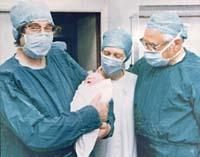
This reaction has led to a pathway of synthesis of organic molecules of various uses. Among other things, it is useful in medicine to produce antibiotics that affect resistant bacteria and to synthesize taxol. Taxol is a compound found in nature and found in the Pacific vagina (Taxus brevifolia) and is a very effective antitumor component. Through the cross coupling catalyzed by the palladium, it has been synthesized in the laboratory.
Chain of reaction, research chain
However, to reach the applications, the contributions of the three aforementioned researchers have been indispensable. In 1968 he published the first articles on carbon links obtained by Hecke using palladium as an intermediary. It joined a carbon ring with an olefin (a two-carbon molecule joined by a double bond) by palladium. From this reaction we obtain styrene, the most important component of plastic polystyrene.
In 1977, Negishi discovered that if one of the two carbons had a zinc atom, the reaction was more effective. Two years later, in 1979, Suzuki proposed the carbons associated with boron to carry out this reaction. Boron is less toxic than zinc and can be associated with many functional groups. Thus, the pathways addressed by these two researchers have allowed the reactions of the cross-link catalyzed by the palladium to occur with greater ease and precision. For all this, all three will receive the Nobel Prize in Chemistry this year.
Louise joy Brown
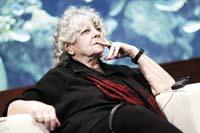
D. D. Ada The Chemical Novel was given to Yonath last year for the work done to investigate the structure and function of the ribosomes. Yonath has also focused his research on medicine, but nothing has to do with the field that this year will receive the Nobel Prize in Physiology or Medicine. Robert G. This award will be awarded to Edwards for his invention of the in vitro fertilisation technique.
Edwards began to investigate the biological foundations of fertilization in the 1950s. In 1969 he achieved in vitro fertilisation of an ovum, but the fertilized ovum did not continue to grow, it did not become embryo. He then asked for help from the inventor of laparoscopy Patrick Steptoe. The extraction of eggs, extracorporeal fertilization and the refinement of the embryo implantation technique in the maternal uterus led to the birth in 1978 of Louise Joy Brown. He was the first child created by in vitro fertilisation. Currently, there are 4 million children born with this technique in the world.
However, Yonath did not invent this Nobel Prize, but did not dare to answer the question of Elhuyar magazine. He does not understand those of the Swedish Academy. Instead, he told Elhuyar a curiosity: last year he spent a few days in Donostia and when he arrived in his country, Israel, they informed him that they were going to give him the Novel. And he said again, in laughter: "I couldn't believe it. Truly, I do not understand those of the Academy."
Buletina
Bidali zure helbide elektronikoa eta jaso asteroko buletina zure sarrera-ontzian











